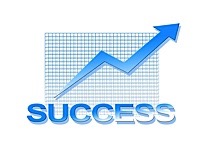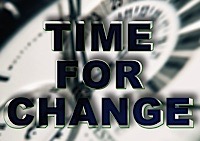
innovation DAILY
Here we highlight selected innovation related articles from around the world on a daily basis. These articles related to innovation and funding for innovative companies, and best practices for innovation based economic development.
How Seattle Set Out to Create a Biotech Hub and Fostered a Global Health Nexus | Xconomy

I recently organized a MOHAI walking tour of South Lake Union to begin to explore the roots of the museum’s new neighborhood. My original intent was to explain the importance of South Lake Union as a biotech hub but a different theme emerged in the course of my research. It is true that Seattle has some success attracting biotech organizations to the city, and the prospects for our region are promising, but not stellar. Where our city, and the South Lake Union neighborhood in particular are “punching above our weight” is in our contribution to global health.
The most important asset for the city has been the University of Washington, which generates the intellectual feedstock that might foster either biotech or global health. Beginning in the 1960s, the school transformed itself from general education university to a formidable research institution. While the conventional wisdom is that Warren Magnuson funneled money to the school when he was head of the Senate appropriations committee, Lee Huntsman makes the distinction that Magnuson championed the growth in the National Institutes of Health and then informed the UW of what they had to do to compete for those funds. Needless to say, they learned to compete very effectively. UW is consistently among the top recipients of NIH funding.
Education Needs a Digital-Age Upgrade - NYTimes.com

If you have a child entering grade school this fall, file away just one number with all those back-to-school forms: 65 percent.
Chances are just that good that, in spite of anything you do, little Oliver or Abigail won’t end up a doctor or lawyer — or, indeed, anything else you’ve ever heard of. According to Cathy N. Davidson, co-director of the annual MacArthur Foundation Digital Media and Learning Competitions, fully 65 percent of today’s grade-school kids may end up doing work that hasn’t been invented yet.
So Abigail won’t be doing genetic counseling. Oliver won’t be developing Android apps for currency traders or co-chairing Google’s philanthropic division. Even those digital-age careers will be old hat. Maybe the grown-up Oliver and Abigail will program Web-enabled barrettes or quilt with scraps of Berber tents. Or maybe they’ll be plying a trade none of us old-timers will even recognize as work.
What's Next For Michael Bloomberg | Fast Company

It is approaching dusk in São Paulo, and in the Auditorio Ibirapuera, a grand opera house set amid the sprawling Brazilian metropolis, mayors from around the world are crowding together, taking pictures of one another. In the middle stands Michael R. Bloomberg, the mayor of New York. He is a man who is used to people asking to have their picture taken with him, and he seems very glad to oblige. Time and again, he asks his longtime companion, Diana Taylor, who's wearing a khaki dress and a sweater tied smartly around her shoulders, to use each person's camera so he or she might carry home a digitized piece of him.
Commercializing research is goal of CincyTech scientist-dealmaker

Dr. Jan Rosenbaum is a molecular pharmacologist and a bioscience matchmaker.
As an executive-in-residence with Cincinnati-based seed-stage investor CincyTech, Rosenbaum matches up physicians with medical-device engineers, emerging therapeutics companies with medicinal chemists, and diagnostics makers with target markets.
Rosenbaum’s role is to look for opportunities to create companies — or commercialize research — out of health care and biotechnology work being done at local research institutions. For the last 12 months, that work has included three trips to Israel to form connections with its dynamic and prolific medical research and biotechnology industries.
Family wealth and venture capital: Entrepreneurs hope for more family-wealth venture investment - OrlandoSentinel.com

Central Florida entrepreneurs have often faced near-drought conditions in the land of venture capital, those high-risk, high-payoff investments that seem to rain down on places like Silicon Valley.
But while the Orlando area historically falls short in venture-capital rankings, there is one area where it appears to keep pace with most areas of the country: family wealth. And although such money has rarely found its way to entrepreneurs in the past, other than to family-owned enterprises, there are signs that such wealth is venturing farther afield, corporate-finance experts say.
Let One, Maybe Two Flowers Bloom - Stuart Anderson - tk - Forbes

As discussed in earlier columns, America does not have a true entrepreneurs visa or a line for entrepreneurs to get in to start a business and create jobs in America. This past week, U.S. Citizenship and Immigration Services (USCIS, the service part of the late INS) sought to loosen some of the federal government’s policies aligned against foreign-born entrepreneurs. But rather than “Let a thousand flowers bloom,” the new policy could perhaps be called, “Let one or two flowers bloom.”
Let’s not be mistaken: Anytime an immigration agency is interested in being more welcoming toward legal immigrants it deserves attention. And one can hope the new policy will help a number of people. The problem is that the new policy does not go very far and is constrained by previous agency actions.
10 Blogs Every Young Entrepreneur Should Read | The Young Entrepreneur Council (Y.E.C.)

There are some first-class blogs on the web for young entrepreneurs. The challenges that these entrepreneurs face every day are immense and having blogs packed with resources, guidance and inspiration are crucial.
Here’s a list of ten outstanding blogs helping entrepreneurs every day.
1. Mixergy
“Where Ambitious Upstarts Mix!”
Andrew Warner, an outgoing, intelligent guy regularly publishes video interviews with high profiled entrepreneurs. Some of the interviews are long — typically an hour or more — but it’s that length that let’s you learn so much from those being interviewed. It’s exciting to dig into the archives and find past interviews with the likes of Jimmy Wales, Tim Ferris, Paul Graham and more.
How to Build Credibility as a Young Entrepreneur

Starting a business is tough enough, and when you're young and inexperienced, the challenge of building credibility is an added pressure. But you shouldn’t let your age get in the way.
"Being young and not having entrenched experience can actually be an advantage,” says Susan Gregg Koger, 26, who founded ModCloth, an online fashion retail company when she was 17. The company now has 240 employees and offices in San Francisco, Los Angeles, and Pittsburgh. “Learning quickly and understanding what a Facebook user wants, what a Twitter user wants – there's something very valuable in being part of that demographic and user base," she says.
Still, it’s important to take a strategic approach to growing your business when you don’t have the power of experience on your side. Here are five tips to help young entrepreneurs build the kind of credibility needed to make their business a success.
A New Beginning for Peru - Entrepreneurship.org

Now that Peru has inaugurated a new government, the verdict is out on how the Ollanta Humala administration treats entrepreneurs. When the new president presented the names of eight of his cabinet ministers for his presidential mandate which started July 28, I was pleasantly surprised to see that Peruvian entrepreneur Salomon Lerner would be among them. At the time, President Humala asked the Peruvian population to trust that the new Cabinet members were committed to the change the country now needs.
Among the changes needed is greater confidence in the free market economy. This lack of confidence has inspired programs, like, EmprendeAhora, designed by Instituto Invertir and CIPE. The program provides an alternative to the negative image of the private sector and entrepreneurship among youth, especially those from low-income families located in the countryside, who compose a great chunk of the population (23%). The Asociación Pro Bienestar y Desarrollo (Association for Welfare and Development), better known as PROBIDE, in turn was formed in 1998 as a nonprofit institution dedicated to promoting creativity, innovation and entrepreneurial culture of competitiveness, primarily in the Peruvian youth population. Since then it has partnered numerous times with the Inter-American Development Bank (IDB) and the most important private companies in Peru to run entrepreneurship programs.
Accelerate Upstate looks north to Canada for New York's economy | Innovation Trail

More than 300 business, political, and community leaders from around the state are gathering in Buffalo today and tomorrow, for the Accelerate Upstate conference.
They’re looking to develop the ideas and relationships that will open a new chapter for western New York’s economy. But the focus on day one wasn’t New York.
It was Canada.
“Canada is open for business”
From a business standpoint, western New Yorkers ignore Canada at their peril, says Kevin Johnson, U.S. Consul General.
“The Canadian dollar is strong, meaning their purchase power is strong. Canadian unemployment is lower because of their welfare state. An unemployed Canadian still has more purchasing power than an unemployed American in many parts of the United States,” Johnson says. “I think the single biggest thing is to say that Canada is open for business. It’s a place where you can look to invest, to sell and to buy things.”
5 Things Great Bosses Never Do | BNET

What you don’t do can make as much or sometimes more impact than what you actually do — and can also say a lot about your leadership style and abilities as a manager.
Here are five things great leaders never do:
Deliver annual performance reviews. Annual or semi-annual appraisals waste everyone’s time. Years ago my review was late, so I mentioned it to my boss. He said, “I’ll get to it… but you realize you won’t learn a thing. You’ve already heard everything I will say, good or bad. If anything on your review comes as a surprise to you I haven’t done my job.” He was right. The best feedback isn’t scheduled; the best feedback happens on the spot when it makes the most impact, either as praise and encouragement or as training and suggestions for improvement. Waiting for a scheduled review is the lazy way out. Your job is to coach and mentor and develop — every day.
A Dozen Economic Facts About Innovation

During the past century, innovation in mechanics, computing technology, medicine, and business practices has driven economic growth, raised wages, and helped Americans lead longer and healthier lives. The development of assembly line production, for example, and its application to the mass production of automobiles reduced the time to produce the Model T Ford by 68 percent over six years and reduced its cost by 62 percent, allowing middle-class families to afford what had once been a luxury (Williams, Haslam, and William 1992). The rapid pace of innovation and increases in productivity continued for most of the century, expanding the efficiency of American workers and providing more valuable goods and services at lower prices.
Since the 1970s, however, the pace of innovation has slowed, leading to lower overall wage growth for American workers. Moreover, those gains that have been made have not been shared equally across society. Although average wages have risen, buoyed by strong gains at the top of the distribution, the wages of many Americans have stagnated or fallen after adjusting for the cost of living over the past forty years. Reinvigorating the momentum of innovation that benefits all Americans is imperative to create broad-based economic growth and higher living standards.
To take on this challenge, The Hamilton Project held a forum, “PhDs, Policies, and Patents: Innovation and America’s Future,” on June 28, 2011. The discussion explored the evolving role of innovation in driving broad-based economic growth in the United States and the policy environment necessary to foster new ideas in science, technology, and business. From that conference The Hamilton Project pulled from the statements of each of our panelists to identify a dozen facts about innovation. These dozen facts encapsulate three themes: First, innovation has historically improved America’s overall standard of living through higher wages, lower prices, and health advancements. Second, the pace of innovation has slowed more recently and the gains from innovation have not benefitted all Americans. Third, in today’s increasingly competitive global economy, current U.S. policies are not doing enough to promote innovation. Without purposeful policies and necessary investments to spur innovation, the United States may not experience the same sort of economic and technological advances in the current century that we enjoyed in the past.
The Creator Of TED Aims To Reinvent Conferences Once Again | Co. Design

Is it time for a new twist on the TED model? The esteemed Technology, Entertainment and Design Conference, soon to be pushing 30, has become a juggernaut--what with sellout events, the viral success of online TED Talks, and the spin-off of smaller TED-X conferences. But the conference’s original founder, Richard Saul Wurman, is working on a new creation that radically overhauls the formula used by TED--much as TED itself reinvented the standard business conference model when Wurman launched it in 1984.
Wurman, who is no longer affiliated with TED (he sold most of the rights to Chris Anderson’s Sapling Foundation back in 2002 and broke off his remaining ties with the spin-off TEDMED Conference earlier this year), recently announced plans for his new WWW.WWW conference, slated to debut in Fall of 2012. So far, he has lined up some heavyweight collaborators—R/GA’s Bob Greenberg and @radical.media’s Jon Kamen are on board, GE is an early sponsor, and Yo-Yo Ma and Herbie Hancock will see to the music. Featured guests are still to be determined, though Wurman promises that the conference will be “like a dinner party with a hundred of the world’s greatest minds having a conversation, two at a time.”
Women in STEM: A Gender Gap to Innovation | Economics and Statistics Administration

Our science, technology, engineering and math (STEM) workforce is crucial to America’s innovative capacity and global competitiveness. Yet women are vastly underrepresented in STEM jobs and among STEM degree holders despite making up nearly half of the U.S. workforce and half of the college-educated workforce. That leaves an untapped opportunity to expand STEM employment in the United States, even as there is wide agreement that the nation must do more to improve its competitiveness.
• Although women fill close to half of all jobs in the U.S. economy, they hold less than 25 percent of STEM jobs. This has been the case throughout the past decade, even as college-educated women have increased their share of the overall workforce.
The Startup You Want To Work At The Most Is Your Own | TechCrunch

By now it is a common axiom in Silicon Valley small talk that good engineers are, at the moment, murder to come by. While the most prominent talent battles have thus far been between Facebook and Google, I was curious whether there was a specific smaller startup that everyone wanted to work at.
So I set up a GoPollGo poll asking, “If you could work for a startup, any startup, which one would it be?” and included the Valley’s most prominent startups, adding new ones as they were suggested by you guys.
The poll, which was tweeted out by the TechCrunch account and posted to our Facebook, got over 36K views and over 5K votes over two days.
Lessons HealthTech Startups Can Take From ZocDoc | TechCrunch
![]()
ZocDoc just announced a $50M round from DST. Where many have failed, ZocDoc has shown that a disruptive new model executed properly can actually work in healthcare. Healthtech startups can take several lessons away from the ZocDoc experience observing from the outside what they have accomplished.
Scrappiness matters. ZocDoc’s CEO & Co-founder, Cyrus Massoumi was tenacious in getting close to his first customers and doing whatever it took to close his first customers. He has shared that he waited in a doctor’s waiting room for 5 hours to speak with one doctor he wanted. In another case, he was escorted out of the building by security due to his persistence.
Radio Without Radios, Books Without Bookstores: Welcome to the Era of Unbound Media | Xconomy

Last weekend I decided to get serious about the fact that I live in an earthquake zone, and started putting together a kit with all the food, water, and equipment I’d need to survive for a few days if local services broke down. One of the items that turns up on all of the standard readiness checklists is a battery-powered radio. So I dutifully added “radio” too my shopping list. But then I realized that in an actual emergency, I wouldn’t know what to do with a radio. I know the name of only one local station, KQED, and I don’t think I could even tell you where it’s located on the dial.
It’s not that I don’t listen to lots of radio programming—I do. I’m a huge fan of public radio shows like Fresh Air, Marketplace, and All Things Considered. I just don’t listen to any of this content on radios (except in my car, where I never change the station anyway). Instead, I get my “radio” via Internet streaming and podcasts. So when the big quake hits, I’ll be reduced to surfing the radio dial at random; I’ll feel like the doofus who has to ask where Google is on the computer.
New York can’t & shouldn’t try to rival Silicon Valley — Tech News and Analysis

New York’s mayor, Michael Bloomberg, envisions his city wresting the title of “technology capital” of the U.S. from Silicon Valley and has embarked on an ambitious plan to build or expand a science and engineering campus in New York. But in hearing the talk, it sounds like Bloomberg believes he can build his way to Silicon Valley success, which I don’t think is possible. And as others are pointing out, it shouldn’t be the goal, either.
A discussion in the New York Times‘ Room for Debate roundtable explores the question of whether New York can rival Silicon Valley, and most of the participants come away saying no. But what many point to is the fact that New York doesn’t have to rival or emulate Silicon Valley; it can be its own success story, with its own unique culture. And that is what the region should be looking at first, rather than trying to gain some bragging-rights parity with the San Francisco Bay Area.
Innovate Washington

The mission of Innovate Washington is to make Washington the best place to develop, build, and deploy innovative products, services and solutions to serve the world so that ideas developed in Washington lead to quality jobs in Washington. It is to be the primary agency focused on growing our innovation-based economy, and responding to the technology transfer needs of existing businesses in Washington.
Innovate Washington will implement Washington’s sector focused economic development strategy. Starting with the clean energy sector and building on the recommendations of the Clean Energy Leadership Council (CELC), it provides a single point of accountability and leverage for combined public and private sector investments. In implementing the recommendations of the CELC, Innovate Washington will leverage existing strengths in the State’s clean energy sector to deliver measureable results in collaboration with industry and higher education to achieve quality, technology-based job creation throughout Washington.

